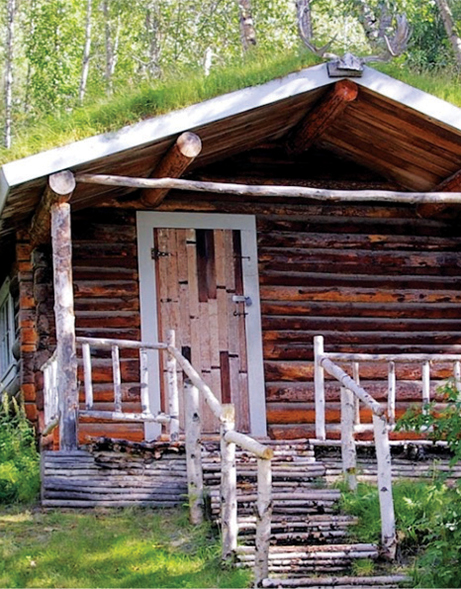The Dawson City cabin

In the early 1970s, as a young man in my 20s seeking to find myself, I left Ontario and headed west to explore a part of Canada I had never seen. With a Trapper Nelson pack on my back, I hitchhiked across the country to British Columbia. After the Rockies, Tofino, and Haida Gwaii, I cast my eyes north and headed up the Alaska Highway to the idyllic northwestern BC town of Atlin. From there I was drawn to the once-thriving Klondike gold rush town of Dawson City, Yukon.
I arrived in Dawson late on a summer’s evening. It was dusk, and I wandered through the unfamiliar streets of the town unsure where I would pitch my tent for the night. I eventually came across an old log cabin, sitting off by itself, looking quite deserted. The door to the cabin was open so I entered and was delighted to find a forlorn-looking single bed in the one-room structure. Since the place was obviously uninhabited, I had no qualms about unrolling my sleeping bag and stretching out for the night. Alas, no sooner had I drifted off to sleep than I was awoken to a bright light shining in my eyes. A deep and somewhat angry voice said, “Young man, do you know whose bed you are sleeping in?”
The cabin had been the home of Robert William Service (16 January 1874–11 September 1958), the famous “Bard of the Yukon,” who had lived in Dawson in the early 1900s toward the end of the gold rush days. The man whose flashlight beam was shining in my eyes was the cabin’s custodian. Realizing that I was innocent of any wrongdoing or intent, he kindly allowed me to spend the night in Service’s bed. The next morning I followed a path leading from behind the cabin to the Midnight Dome lookout, from which I enjoyed a spectacular view of the city and the confluence of the Klondike and Yukon Rivers. I wondered how many times the famous poet had done the same.
Years later, after I completed UBC medical school and an internship at Royal Columbian Hospital, my wife Sharon and I decided to settle on the Sunshine Coast, where I began a 40-year career in family medicine. Early on in my practice, a new patient presented one day. His name was Thomas Byrne. He was a delightful elderly Irish man, slight of stature with a constant impish smile and a gleam in his eyes. He told me he had just arrived from Dawson City, where he worked every summer. Upon further questioning, I learned that his job, more like a passion for him, was to do afternoon readings of Robert William Service’s poems for the tourists in Dawson City. And where did he do those readings? Why, where else but from the steps of the Bard’s cabin!
It is a small world indeed.
 |
| View of Dawson City and the confluence of the Klondike and Yukon Rivers from the Midnight Dome lookout. |
 |
| Robert William Service’s cabin in Dawson City, Yukon. |
 |
| The single bed in the one-room cabin. |
 |
| Tales of the Far North Volume II: Tom Byrne Recites Robert W. Service in Dawson City, Yukon, CD. |
hidden
This article has been peer reviewed.
 |
| This work is licensed under a Creative Commons Attribution-NonCommercial-NoDerivatives 4.0 International License. |
